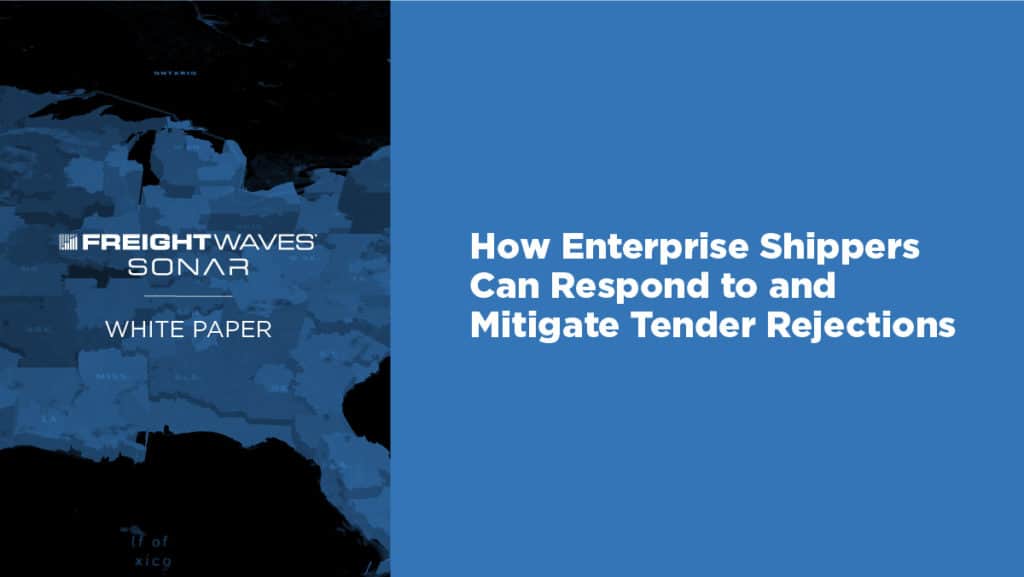Successful freight management hinges on effective procurement and insight into current market conditions. As the industry settles (to a degree) following the biggest peak season in history, now is the time when shippers will start rethinking their annual contracts. And now is also the time when carriers typically start thinking about what new freight rates to ask for in trucking RFP bids or when working with more freight brokerages. Unfortunately, the trials of 2020 taught supply chain leaders that planning on the typical expectations will not always work. And to survive 2021, freight management parties need to know a few things about the value of shipping lane acuity and how SONAR data makes insight into possible.
Shipping lane acuity carries many similarities to the acuity in a health environment. In this situation, acuity is another name for volatility. As acuity increases, the risk of losses or damage to the transportation “body” increases. While the body in this metaphor gets ill with higher volatility, some systems could remain relatively unaffected. Those systems are like individual lanes within the transportation industry. By capitalizing on those systems that are not as much at risk, it’s easier to find a remedy. In other words, focusing on those lanes with lower acuity scores will have the net effect of lowering total freight spend, while promoting increased freight procurement and fewer tender rejections.

Shipping lane acuity reflects the overall risk score assessed by lane. Part of that risk plays into how successful shippers or carriers will be keeping their overhead expenses under control and maximizing efficiency.
Think about it. Success lies in understanding two fundamental aspects of freight. As reported by the Uber Freight Blog, these surround the “predictability of your supply chain, including the individual trajectory of your business and industry, and fixed production, storage, and fulfillment needs. [and the] flexibility of your current capacity procurement plan to address shifts in demand patterns.” But it’s not even a whole industry view that can have the biggest impacts. Broad market assumptions are great for broad strategies, but as everyone knows, the supply chain is rarely that simple.
How can an organization sum up contractual differences within a single source without considering individual nuances and unique trucking trends of each shipping lane?
That’s a trick question; they can’t. The only way to really capture the needed insights is to view the larger and smaller pictures in all 135 U.S. markets, as well as port activity, air freight demand, and more. That’s where FreightWaves SONAR shipping lane acuity can help.
Insight into shipping lane acuity empowers freight management parties with real-time freight data that’s actionable, insightful and valuable. After all, the best-laid plans for RFP processes will fall far short when capacity crunches take hold. And while the industry looks to 2021 with hope, the best option is to prepare for what could, what is likely, and what might seem too far-fetched to happen. And with acuity of insight and knowing the volatility of individual lanes, freight management parties can better plan RFPs with near- or real-time data.
Access and insight into shipping lane acuity bridges the divide between broad and granular trucking market conditions. That has several added implications and benefits for planning short-term and long-term trucking contracts, including:
Shipping lane acuity or volatility is nothing new. Lane rates change, and depending on the O/D pair, rates will vary. However, the ability to collect and apply the most accurate and timely data is critical to knowing when to balance a load between spot and contracted rates, when to initiate new bidding processes, and how to strike a greater profit margin, says Chief Executive:
“Lean supply chains require that the information exchanged between customers and suppliers be highly accurate, and that the product flow remain within a relatively small range of variance, often 5-10%. Without rapid, accurate forecasts and controlled product flow, a just-in-time supply chain quickly becomes a ‘just-in-case’ supply chain, often with three times the safety stock needed to meet uncertain demand.”
That’s the value proposition of FreightWaves SONAR shipping lane acuity. And upon launch, FreightWaves SONAR SCI will provide insight into both paid and tendered rates for shippers and carriers alike. In the interim, request a FreightWaves SONAR demo by clicking the button below.
